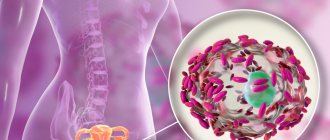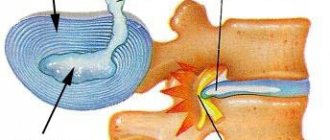Pain and stiffness in various muscle groups are the main symptoms of polymyalgia rheumatica. This disease affects people over the age of 50, the disease predominantly develops among women. Polymyalgia rheumatica is a treatable disease. At the Yusupov Hospital, patients who show signs of illness can undergo diagnostics and, if pathology is identified, receive high-quality treatment.
Polymyalgia rheumatica: ICD-10 code
Polymyalgia rheumatica is included in the International Classification of Diseases, 10th revision. This disease is classified by experts into the category of systemic connective tissue lesions, coded M35. Diseases belonging to this category arise due to hereditary predisposition and the effect of various environmental factors on the body.
In the international classification of diseases, used when making a diagnosis by specialists at the Yusupov Hospital, polymyalgia rheumatica has code M35.3. Therapists at the Yusupov Hospital, together with other specialists, are developing comprehensive programs based on the use of medications, physiotherapy and exercise therapy to treat patients with this diagnosis. The use of modern methods of treatment of polymyalgia rheumatica is aimed at improving the quality of life of patients and eliminating the disease.
Polymyalgia rheumatica: symptoms and treatment of the disease
Polymyalgia rheumatica is of an autoimmune nature, therefore, with this disease, the immune system perceives its own cells as foreign and begins to fight them, resulting in tissue damage. Severe intoxication and fever are the first signs of the disease.
If a patient develops polymyalgia rheumatica, the symptoms of the disease are pronounced:
- intense muscle pain localized in the neck, shoulders, spine, lower back, hips, buttocks. Myalgia appears in patients after being in a stationary position, under static load, and also after waking up;
- limited movement. People with this disease cannot perform basic actions, such as turning their heads or getting dressed;
- weakness and fatigue are noted by many patients with this disease;
- Fever and night sweats occur early in the disease;
- Frequent steps and mincing gait.
Symptoms of polymyalgia rheumatica do not worsen with changes in weather conditions, or with exposure to heat or cold. In addition, experts have not established the infectious nature of the disease. Relieving pain and eliminating symptoms of the disease is one of the areas of treatment for polymyalgia rheumatica. Specialists at the Oncology Clinic select methods and means for patients to eliminate the manifestations of the disease in the shortest possible time.
Polymyalgia rheumatica, the symptoms and treatment of which are interrelated, has maximum manifestations 2 months after the onset of the first symptoms. Some patients self-medicate when pain and muscle stiffness occur, which worsens the course of the disease. During this period, signs of the disease can lead to complete immobilization of a person.
Risk of complications
The disease itself does not threaten the patient’s life. But if you do not seek help from a specialist in a timely manner and do not start treatment in the early stages, various consequences may develop. Most often, RPM is complicated by the following pathologies:
- osteoporosis;
- inflammation of the temporal artery (temporal arteritis);
- diabetes;
- vision problems (for example, cataracts);
- increased blood cholesterol levels.
A little more detail. The most dangerous consequence of the disease is the development of temporal arteritis (or VA, otherwise called giant cell or temporal) - inflammation of the aortic arch, which affects the temporal artery and other large vessels of the neck and head. The cause of the disease is blockage of the vascular bed due to the accumulation of abnormal giant cells in it. The disease is accompanied by swelling and pain in the temporal zone and in the scalp. Other symptoms of giant cell arteritis are: permanent or episodic general hyperthermia (increase in body temperature to 38 - 39 degrees); frequent headaches (for example, when combing hair); decreased or even complete loss of appetite; dull pain in muscles and/or joints; disturbance of night sleep; discomfort in the facial area - pain, tingling, numbness, burning during a conversation or eating. There is also thickening and redness of the temporal and parietal arteries, and pain occurs in them. The inflammatory process begins to affect the organs of vision - the image becomes unclear, “fog” appears before the eyes and diplopia, and the upper eyelid droops. All of the above symptoms appear after several months from the onset of temporal arteritis. This disease is dangerous because it can lead to the development of partial or complete blindness, stroke, and heart attack. The overall prognosis, however, is favorable, since mortality from VA does not exceed the average for other “age-related” diseases.
Polymyalgia rheumatica can also be complicated by joint pathologies such as arthritis, bursitis, synovitis. The inflammatory process subsides after the primary disease (RPM) is cured.
Other potential complications may arise from glucocorticoid treatment. In order to prevent them, doctors additionally prescribe medications to avoid such consequences as: cataracts; diabetes; osteoporosis; arterial hypertension; steroid gastric ulcers; hypokalemia.
As we have already said, the disease does not pose a threat to human life, however, its therapy takes a very long time. The weakening of motor function in this disease is caused not by pain, but by muscle atrophy. In some cases, patients are not even able to wash and dress themselves, which significantly reduces their standard of living. In addition, it should be clarified that pain in the joints may not appear immediately, therefore, if you notice at least some of the above signs, you should immediately seek advice from a rheumatologist.
Causes of polymyalgia rheumatica
Experts have found that the likelihood of developing polymyalgia rheumatica in older women is twice as high as in men. However, the reasons for the development of the pathological process still cause controversy among specialists.
According to one theory, the development of the disease is caused by viral pathogens, since patients have antibodies to respiratory syncytial virus and adenovirus. Proponents of another theory believe that the pathological process is caused by genetic disorders. Polymyalgia rheumatica, the symptoms and treatment of which are determined by the degree of tissue damage, can develop under the influence of factors:
- Horton's disease;
- infectious diseases caused by parainfluenza and adenoinfluenza viruses;
- prolonged stress;
- hypothermia.
Comprehensive diagnostics carried out in the therapy clinic of the Yusupov Hospital are aimed at establishing the causes of the pathological process. Effective therapy for this disease should include not only symptomatic treatment, but also measures to eliminate the causes of the disease and provoking factors. Specialists at the Yusupov Hospital organize regular interaction with patients to establish the nature of the course of the disease and the effectiveness of treatment measures.
1.General information
If the medical name of a disease contains the word “rheumatic” or “rheumatoid,” this almost always means a pathology of the connective tissue and/or musculoskeletal system, in particular the joints. There are many such diseases known, they are weakly associated with external factors or not at all, and the formidable parental warning that was heard in almost every family fifty years ago - “If you walk in sneakers in the cold, you will get rheumatism!” - is only partly is justified.
The term “polymyalgia rheumatica” literally means “multiple muscle pain of rheumatic origin.” Not everything is known about this disease yet; There are also no precise statistics on prevalence. However, it is known that polymyalgia rheumatica is associated with some etiopathogenetic connection with Horton's disease (one of the variants of systemic vasculitis, or inflammation of blood vessels - in this case, the branches of the carotid and temporal arteries). It is also known that polymyalgia rheumatica almost always begins in the second half of life (after the age of 50) and affects women more often than men.
A must read! Help with treatment and hospitalization!
Diagnosis of polymyalgia rheumatica
When diagnosing and treating patients diagnosed with polymyalgia rheumatica, clinical recommendations are used by specialists at the Yusupov Hospital. Highly qualified rheumatologists use European equipment and modern methods to identify the pathological process.
Diagnosis of rheumatological polymyalgia is based on traditional studies and modern diagnostic methods:
- examination of the patient aimed at identifying hepatitis B and C;
- blood chemistry;
- clinical urine and blood tests;
- computed tomography of the lungs;
- X-ray examination;
- magnetic resonance imaging of joints;
- ultrasound examination of internal organs.
If a patient develops a torpid course of polymyalgia rheumatica, then the diagnosis and treatment of the disease are the most difficult. The diagnostic center of the Yusupov Hospital is equipped with high-precision devices for detecting the pathological process at the initial stage. Our specialists have extensive experience in identifying rheumatic diseases and interpreting the results, which allows us to eliminate medical errors. If polymyalgia rheumatica is detected, the patient is offered hospitalization and inpatient treatment.
4.Treatment
Non-steroidal anti-inflammatory drugs turn out to be ineffective or ineffective, while hormone-containing drugs (glycocorticosteroids) have a rapid and pronounced effect, which is an additional diagnostic sign and indicates the role of endocrine mechanisms in the etiopathogenesis of the disease.
Typical uncomplicated polymyalgia rheumatica usually occurs in two phases. The first is characterized by the severity and severity of clinical manifestations, the second is stabilization: tolerable pain and some difficulty in movement remain, which, as a rule, are reduced within one and a half to three years. However, relapses of the disease are possible, in which case hormonal therapy must be resumed.
In cases where severe complications develop, the prognosis is less favorable: the course of polymyalgia can result in joint deformation, disability, etc.
Polymyalgia rheumatica: treatment
Patients of the Yusupov Hospital who have been diagnosed with polymyalgia rheumatica are offered treatment in a hospital setting. In addition, experienced rheumatologists provide high-quality outpatient care and carry out rehabilitation measures. Treatment of the disease is carried out in several directions:
- taking medications. For this disease, patients are prescribed corticosteroids. The duration of drug therapy can reach one year. In addition, mineral complexes can be prescribed to prevent other diseases of the musculoskeletal system;
- physiotherapeutic procedures allow you to activate metabolic processes in the body and speed up its recovery;
- Physical therapy is used by specialists to restore mobility and range of motion.
Rheumatologists at the Yusupov Hospital recommend that patients with this disease follow a special diet, in which it is not recommended to consume fatty animal products, sweets and other foods rich in carbohydrates.
After treatment at the polymyalgia rheumatica therapy clinic, patients forget about discomfort and stiffness of movement and return to an active life. By making an appointment with a rheumatologist by calling the Yusupov Hospital, during the consultation you can receive answers to your questions and a referral for diagnostics.








